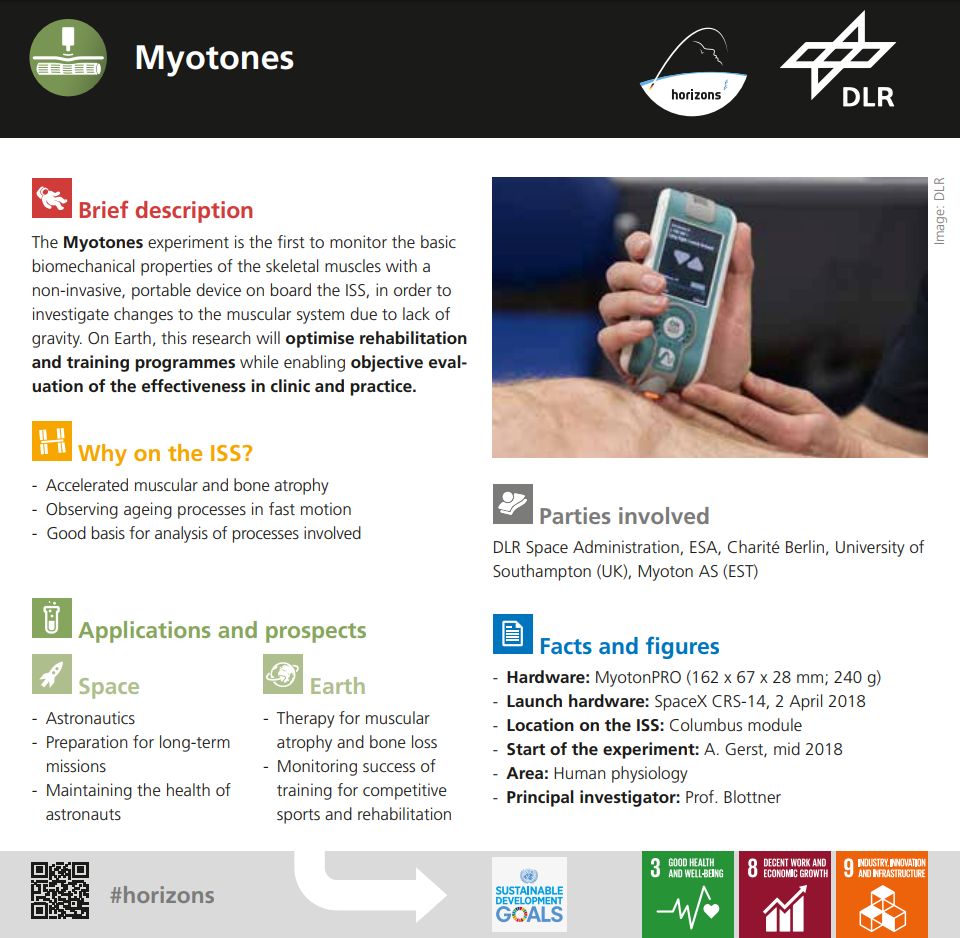When you are floating around in a state of perpetual weightlessness, it is easy to lose muscle function and bone mass. This is well documented and astronauts up at the International Space Station – like ESA astronaut Alexander Gerst – train for at least one and a half hours every day to combat it.
However, an area we know much less about is the effect of microgravity on the Human Resting Muscle Tone (HMRT). And it is something scientists from Charité University Medicine Berlin are eager to investigate.
Myotones is an experiment designed to monitor the tone, stiffness and elasticity of ESA astronaut Alexander Gerst’s muscles during his Horizons mission. This is done using a non-invasive, roughly smart-phone sized, portable device called a MyotonPRO.

The MyotonPRO is already being used as an alternative to muscle biopsies here on Earth and works by delivering a short pressure pulse to the body. In doing so, it is able to calculate information about the elasticity, stiffness and residual stress (tone) of the resting muscle based on the reaction of the tissue to this pulse.
Results from Alexander’s back, arms, legs and feet – as seen in this clip – will be compared to measurements taken before and after spaceflight to help identify critical risks and the best countermeasures.
It is the kind of research that could help improve the lives of many people on Earth, as well as aiding space travel. Elbow and back pain are common complaints for office workers and those carrying heavy loads. While the elderly, those on prolonged bed rest and people living sedentary lifestyles are often affected by stiffness or a decline in function.
Armed with a deeper understanding of how the HMRT system works, medical professionals will be much better equipped to prevent and treat such conditions in future.




Discussion: 2 comments
The current studies of HRMT in astronauts exposed to zero-gravity for long periods promises to provide important information on biomechanical effects of withdrawing gravity and the compensatory effects of exercise protocols. Studies after returning to Earth will determine if the zero-gravity effects can be reversed or persist as altered biomechanical properties or histological changes.
So far, the Myotones Team was able to collect the first biomechanical data from an Astronaut´s HRMT system in microgravity and the results look promising. More data will be collected over time to confirm changes due to the micro-g environment. oboard the ISS. We hope to collect a solid database on biomechanical changes in human skeletal muscle, tendon and fascia during and afetr spaceflight.